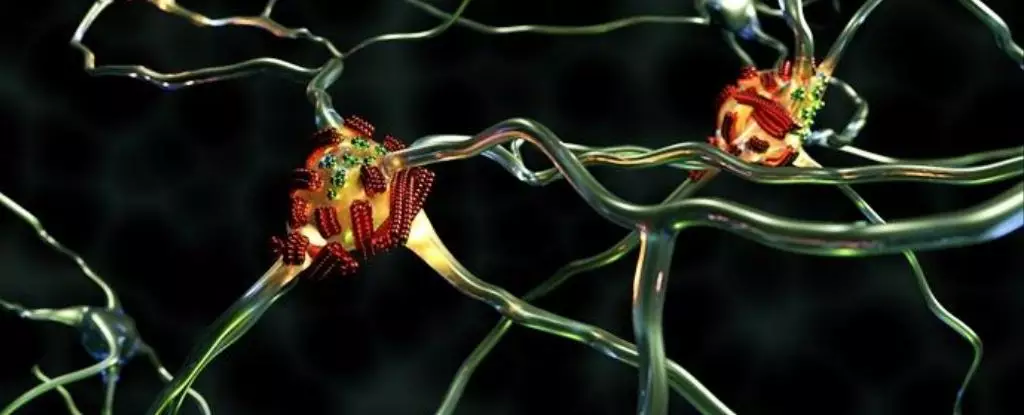Alzheimer’s disease remains one of the greatest challenges in neurological research, characterized by insidious progression and devastating impacts on memory and cognitive function. Recent advancements in imaging technology have shed light on a specific group of proteins—termed “superspreaders”—that may be pivotal in the evolution of this complex disorder. A study led by molecular physicist Peter Nirmalraj and his team provides critical insights into how these amyloid beta proteins proliferate in the brains of Alzheimer’s patients, marking a significant step toward unraveling the mechanisms underlying the disease.
At the heart of Nirmalraj’s research is the identification of a select group of amyloid beta proteins that exhibit a remarkably rapid aggregation process. This findings question previous assumptions about the role of amyloid beta in Alzheimer’s. The conventional view posited that the accumulation of amyloid beta plaques was a primary culprit in neuronal damage. However, this new research raises the possibility that the pathology of Alzheimer’s may be more nuanced, with these superspreading proteins playing a critical role in accelerating the spread of undesirable aggregates. By studying these proteins in conditions mimicking the brain’s natural environment, the researchers established that certain variants of amyloid beta fold in a distinctly reactive manner, allowing them to aggregate more swiftly than their counterparts.
Nirmalraj and his colleagues employed advanced imaging techniques focusing on real-time observation of protein dynamics, an approach that offers a substantial methodological leap from conventional practices. Traditional staining methods often altered the very proteins they sought to analyze, obscuring their natural configurations. By utilizing an atomic force microscope over an extensive 250-hour observation period, the researchers revealed the unique properties of a specific variant—amyloid beta 42. This variant notably initiates aggregation only after a primary fiber has formed, indicating a complex hierarchical structure in the amyloid beta family that has significant implications for our understanding of the disease.
Their findings elucidate that amyloid beta 42 fibrils are not merely passive participants but rather act like catalysts in the formation of larger, more damaging amyloid structures. The emergence of these superspreaders could clarify the previously mysterious escalation of amyloid accumulation in the brain, which correlates with the clinical symptoms observed in Alzheimer’s patients.
While the study provides valuable insights, it also highlights the need for further investigation into the chemical properties that differentiate amyloid beta 42 from others in the amyloid family. Understanding the peculiarities of these proteins could pave the way for more targeted therapeutic interventions. The notion that specific variants of amyloid beta could be strategically manipulated holds promise for developing treatments aimed at halting or even reversing disease progression.
However, the relationship between amyloid plaques and cognitive decline remains contested. Previous studies have suggested that while amyloid beta accumulation is prevalent in Alzheimer’s, it does not directly correlate with neuronal damage. This could mean other molecular players are involved, prompting researchers to consider alternative hypotheses, including the possibility that Alzheimer’s may have autoimmune characteristics. Such theories underscore the necessity of a holistic approach to understanding the disease, encompassing a myriad of biological changes occurring over decades.
The exploration of superspreaders is a vital piece in the intricate puzzle of Alzheimer’s disease. As researchers continue to untangle the threads of this complex disorder, Nirmalraj’s study underscores the importance of innovative methodologies and collaborative science in the fight against neurodegeneration. With each new discovery, we inch closer to comprehending not only how Alzheimer’s accelerates its insidious grip on the mind but also how we might one day effectively combat it. The journey towards effective treatment solutions remains challenging, yet the promise of new techniques and insights fuels the hope that understanding amyloid beta dynamics will ultimately lead to breakthroughs in Alzheimer’s care and management.



Leave a Reply